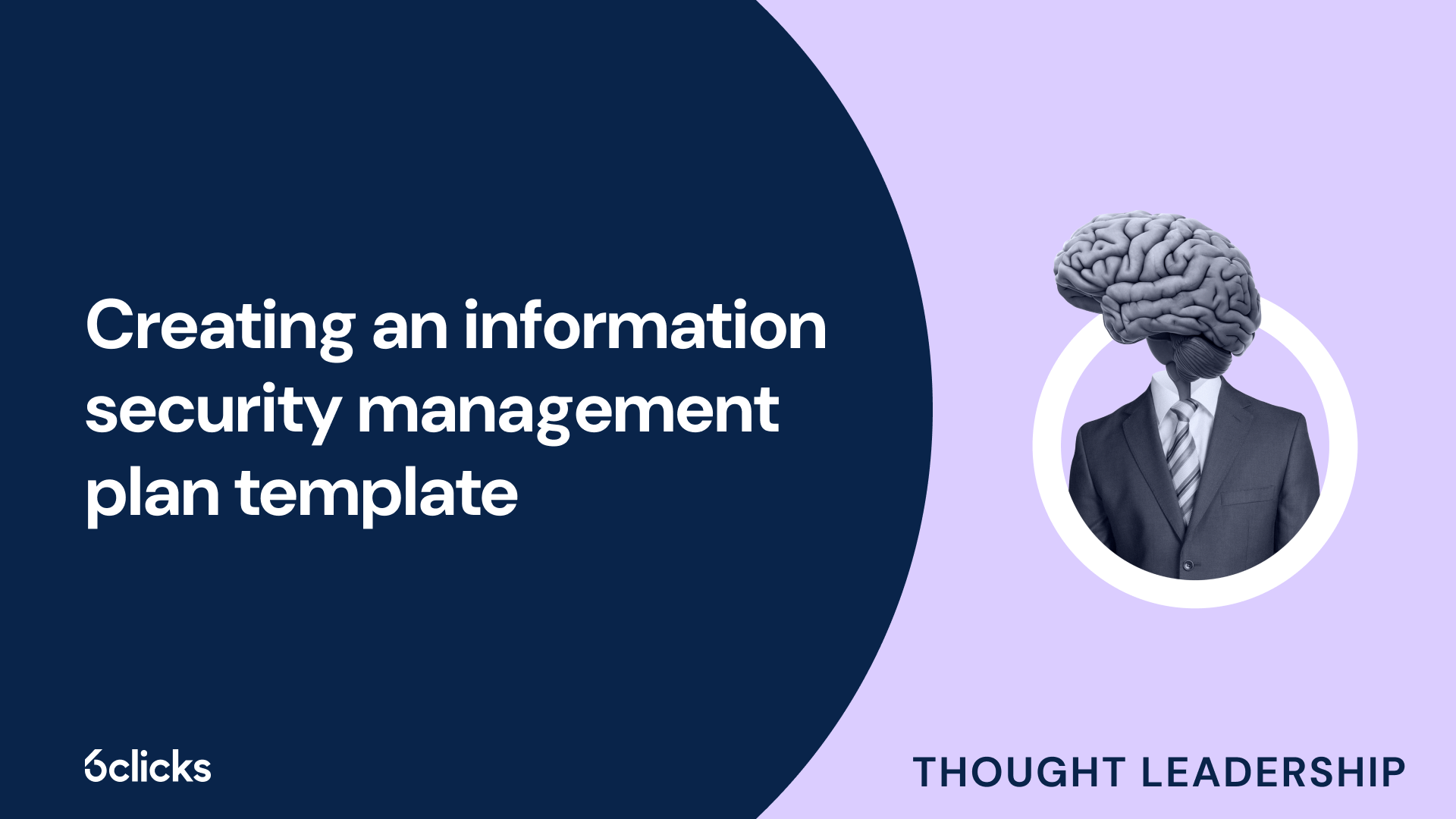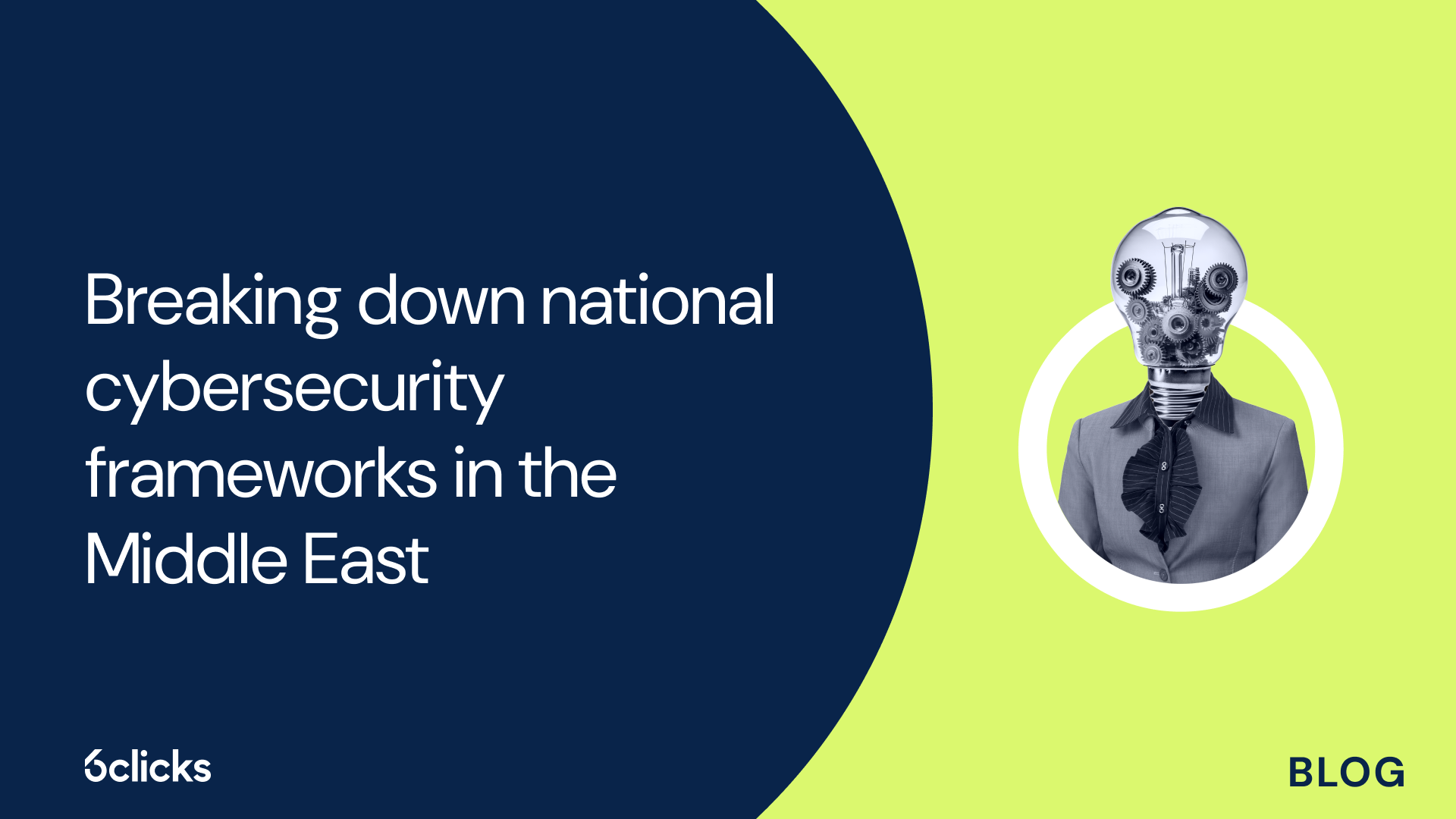Third-Party Risk Management Expert Guide
Get the Third-Party Risk Management Expert Guide to master vendor risk strategies, improve compliance, and safeguard your business. Download now!
-1.png?width=200&height=249&name=Group%20193%20(1)-1.png)
Third-Party Risk Management Expert Guide
Definition of vendor risk assessments
A vendor risk assessment is a crucial aspect of any organization's risk management strategy. It involves evaluating and managing the potential risks associated with working with third-party vendors or service providers. These assessments aim to identify, analyze, and prioritize the risks that could arise from the vendor relationship, such as financial instability, regulatory non-compliance, reputational risk, or security breaches. By conducting a thorough vendor risk assessment, organizations can make informed decisions about the level of risk they are willing to accept and implement appropriate risk mitigation measures. This process typically includes evaluating the vendor's financial stability, regulatory compliance, security controls, and business continuity plans. Through the use of questionnaires, templates, and ongoing monitoring, vendor risk assessments enable organizations to establish strong vendor risk management programs and establish acceptable risk levels for their business relationships. Ultimately, vendor risk assessments help organizations minimize potential losses and maintain strong relationships with their vendors.
Reasons for conducting vendor risk assessments
Vendor risk assessments are an essential component of a comprehensive risk management strategy. They involve evaluating the potential risks associated with engaging third-party vendors and implementing strategies to mitigate those risks. Conducting vendor risk assessments is crucial for several reasons.
Firstly, identifying potential risks is vital to protect organizations from financial losses and legal liabilities. Engaging with vendors who have inherent risks, such as financial instability or non-compliance with regulatory requirements, can lead to costly issues and legal consequences. By conducting thorough assessments, organizations can make informed decisions about which vendors to engage with, ensuring financial stability and reducing the likelihood of future financial losses or legal complications.
Secondly, vendor risk assessments help safeguard an organization's reputation. Engaging with vendors who have a poor track record of quality, security breaches, or unethical practices can damage an organization's reputation and erode customer trust. A thorough assessment enables organizations to identify and avoid vendors who could potentially tarnish their brand image, preserving their reputation and maintaining customer loyalty.
Additionally, vendor risk assessments enhance overall performance and compliance. By evaluating the risks associated with third-party vendors, organizations can identify areas where improvements are necessary and set higher standards for their chosen vendors. This ensures that vendors comply with industry standards and regulatory requirements, which in turn leads to improved performance and a reduced risk of compliance breaches.
Identifying third-party vendors
When it comes to vendor risk assessment, one of the key steps is identifying potential third-party vendors. Thoroughly researching and identifying potential vendors is crucial to the success of an organization's vendor risk management program. This involves considering various factors such as the vendor's reputation, financial stability, regulatory compliance, and security controls. By carefully selecting vendors who align with the organization's risk management strategy and meet acceptable levels of risk, organizations can establish strong vendor relationships and mitigate potential risks. Conducting due diligence during the vendor identification process helps organizations proactively evaluate and assess potential vendors' inherent risks, ensuring a more effective and comprehensive vendor risk assessment process. Furthermore, this proactive approach enables organizations to build a vendor list that includes reliable and trustworthy partners, reducing the likelihood of financial, reputational, and operational risks in the long term.
Compiling a list of vendors
Compiling a list of vendors is the first step in the vendor risk assessment process. This involves gathering basic information such as the vendor's name, address, and contact information. It is important to have accurate and up-to-date information for all vendors.
Additionally, classifying the vendors based on their importance to your success and the level of risk they pose is crucial in prioritizing the vendor risk assessment process. Some vendors may have a greater impact on your operations and overall success, while others may pose a higher level of risk due to various factors such as their financial stability, regulatory compliance, or reputation.
By prioritizing vendors based on their importance and risk level, you can allocate your resources and efforts effectively. This allows you to focus on assessing the potential risks associated with the vendors who have the greatest impact on your business.
Evaluating potential risks
When conducting a vendor risk assessment, evaluating potential risks is a critical step in identifying and mitigating any threats that may arise from working with third-party vendors. These risks can vary across different areas, including financial, reputational, compliance, and operational aspects.
Financial risks involve assessing the vendor's financial stability, ensuring they have the resources to meet their obligations. This includes analyzing their financial statements, creditworthiness, and overall business health.
Reputational risks involve examining the vendor's reputation and track record in the industry. This includes investigating their past performance, customer feedback, and any negative publicity that could impact your organization's reputation by association.
Compliance risks involve assessing whether the vendor adheres to relevant laws, regulations, and industry standards. This includes evaluating their regulatory compliance, data protection practices, and any legal or ethical issues that could pose a risk to your organization.
Operational risks involve analyzing the vendor's ability to meet your organization's needs and expectations. This includes assessing their operational processes, infrastructure, and business continuity plans to ensure they can deliver their products or services consistently and effectively.
It is equally important to assess each vendor individually to determine their level of risk. Different vendors may pose varying levels of risk based on their size, industry, geographic location, and the nature of their services. By conducting individual assessments, organizations can tailor their risk management strategy and allocate resources accordingly to address the specific risks posed by each vendor.
Setting risk levels and parameters
Setting risk levels and parameters is a crucial step in the vendor risk assessment process. It involves determining the types of risks to include in the assessment and developing a scoring system to evaluate and rank vendors based on their level of risk.
When setting risk levels, it is important to consider the specific types of risk that are relevant to your organization. These may include financial risk, reputational risk, operational risk, compliance risk, and privacy risk, among others. By identifying and categorizing these risks, you can prioritize your assessment efforts and allocate appropriate resources.
To develop a scoring system, you need to assign weights and values to each risk category and factor. This will help you quantify the level of risk associated with each vendor. The scoring system can be based on a numerical scale or a qualitative assessment, depending on your organization's preferences and requirements.
It is also important to consider the level of residual risk that your organization is comfortable with. Residual risk refers to the level of risk that remains after implementing risk mitigation strategies. Factors to consider when determining the acceptable level of residual risk include the criticality of the vendor's products or services, the potential impact on your organization's operations, and the availability of alternative vendors.
Consistency is key when it comes to evaluating and scoring vendors. By using the same evaluation criteria and scoring system for each potential vendor, you can ensure a fair and objective assessment. This allows for easier comparison and benchmarking, ultimately leading to more effective vendor risk management.
Analyzing financial stability and reputational risk
One crucial aspect of vendor risk assessment is analyzing the financial stability and reputational risk of potential vendors. This evaluation helps determine whether a vendor is reliable, trustworthy, and aligns with your organization's values. Here are a few key factors to consider when assessing these risks:
- Financial Stability: Assessing a vendor's financial stability is essential to ensure they have the resources and capability to meet their contractual obligations. Evaluate their financial statements, credit ratings, and liquidity ratios to gain insights into their financial health. Look for indicators such as consistent revenue growth, low debt levels, and positive cash flow. Conducting due diligence on a vendor's financial stability can protect your organization from potential disruptions or financial losses.
- Reputational Risk: A vendor's industry reputation is crucial in understanding their track record and trustworthiness. Research industry reports, customer reviews, and news articles to gauge their standing within the market. Additionally, investigate any incidents of unethical conduct, lawsuits, or regulatory violations they may have been involved in. This information is invaluable in assessing the integrity and reliability of a vendor and can help prevent reputational damage to your organization by association.
By thoroughly analyzing the financial stability and reputational risk of potential vendors, organizations can make informed decisions about their suitability as business partners. This analysis provides a comprehensive understanding of a vendor's financial capabilities, industry standing, and ethical conduct, ultimately reducing the potential risks associated with the vendor relationship.
Developing a risk management strategy
Developing a risk management strategy is a critical step in ensuring the success and security of your business. By proactively identifying and addressing potential risks, you can mitigate the negative impacts they may have on your operations, financial stability, and reputation. A robust risk management strategy involves a systematic approach to assessing and managing risks associated with your vendor relationships. This includes identifying the types of risks your organization may be exposed to, evaluating the level of risk each vendor presents, implementing appropriate risk management measures, and regularly reviewing and updating your risk management strategy to adapt to evolving threats and changes in your vendor landscape. By taking a proactive and comprehensive approach to vendor risk assessment, you can protect your organization from potential disruptions, financial losses, and reputational damage.
Creating a vendor relationship plan
Creating a Vendor Relationship Plan: Establishing Clear Guidelines and Expectations
In today's business landscape, organizations often rely on third-party vendors to fulfill certain functions or provide specialized services. While entering into these partnerships can be beneficial, it also comes with potential risks. That's why it is crucial to establish a vendor relationship plan that outlines clear guidelines and expectations.
A vendor relationship plan serves as a roadmap for cultivating effective partnerships. It defines the communication channels, service level agreements, responsibilities, and obligations of both parties involved. By outlining these parameters, organizations can ensure that vendors understand their roles, expectations, and the level of service required.
One key aspect of a vendor relationship plan is establishing clear communication channels. This enables effective collaboration and ensures that any issues or concerns are addressed promptly. Additionally, service level agreements define the standards and metrics that vendors must meet to ensure high-quality service delivery.
Creating a robust vendor relationship plan helps mitigate potential risks, align expectations, and foster a productive working relationship. It also provides a foundation for ongoing vendor risk assessment as part of a comprehensive risk management strategy. By regularly evaluating vendors based on their performance and adherence to the plan, organizations can identify and address any issues or potential risks that may arise.
Establishing security controls and policies
Establishing security controls and policies is a crucial component of the vendor risk assessment process. Organizations must inquire about their potential vendor's data protection policies, incident response plans, employee training, and compliance with relevant laws and regulations to ensure the safety and security of sensitive information.
By asking vendors about their data protection policies, organizations can assess whether they have robust measures in place to safeguard data from unauthorized access, loss, or theft. This includes encryption methods, access controls, and regular security audits.
Incident response plans are also essential to address and mitigate any security breaches or incidents that may occur. Organizations should inquire about how vendors handle and respond to security incidents, including the communication process, containment measures, and steps taken to prevent future incidents.
Employee training is another important aspect of vendor security controls. Organizations should seek information about the training programs implemented to educate employees on best practices for data protection and security measures. This ensures that vendors have a well-informed and security-conscious workforce.
Lastly, organizations must verify that their vendors are compliant with relevant laws and regulations governing data security and privacy. This includes industry-specific standards and legal requirements.
To further enhance security controls and policies, organizations should consult their internal security team for additional best practices. Input from the security team can provide valuable insights based on recent security breaches and updates to certifications.
Implementing regulatory compliance requirements
Implementing regulatory compliance requirements for vendor risk assessments involves several key steps. First and foremost, organizations need to ensure compliance with relevant privacy laws and regulations. This requires a thorough understanding of the specific requirements and obligations imposed by the applicable laws, such as the General Data Protection Regulation (GDPR) or the California Consumer Privacy Act (CCPA).
Additionally, organizations should adopt widely accepted security standards, such as ISO 27001 or NIST Cybersecurity Framework, to strengthen their vendor risk assessment process. These standards provide a framework for implementing comprehensive security controls and best practices.
Regular technology reviews and audits are essential to assess the effectiveness and compliance of vendors' security controls. This involves conducting assessments of the technologies and systems used by vendors to identify any vulnerabilities or weaknesses that may pose risks to data security.
It is also important to consider vendors' incident histories. Organizations should evaluate how vendors have handled security breaches or incidents in the past, including their response, containment measures, and steps taken to prevent future incidents. This information helps assess the vendors' ability to handle and mitigate security risks effectively.
By following these steps and implementing robust regulatory compliance requirements, organizations can enhance their vendor risk assessment process and ensure the protection of sensitive data in their business relationships.
Building a business continuity plan
Building a business continuity plan (BCP) for vendor risk assessment is crucial for organizations to ensure the availability of critical systems and the security of data in the event of a disruption or disaster. A robust BCP helps organizations to proactively identify potential risks associated with third-party vendors and develop strategies to mitigate these risks effectively.
To create a comprehensive plan, organizations should follow these steps:
1. Conduct a risk assessment: Start by evaluating the potential risks posed by third-party vendors. This includes assessing the financial stability and regulatory compliance of vendors, as well as evaluating the inherent risk associated with their products or services. This step helps identify the level of risk involved in vendor relationships.
2. Identify critical systems and data: Determine which systems and data are essential for the ongoing operations of the organization. This includes identifying the dependencies on third-party vendors for these critical systems. By understanding the dependencies, organizations can prioritize their resources and efforts towards protecting these vital assets.
3. Develop strategies for business continuity and disaster recovery: Based on the identified risks and critical systems, develop strategies to ensure the availability and functionality of these systems in the event of a disruption or disaster. This may include implementing redundant systems, backup plans, or alternative vendor options to maintain business continuity.
4. Establish communication and coordination protocols: In times of crisis, clear communication and coordination are key. Establish protocols for timely communication with vendors, stakeholders, and employees to ensure everyone is aware of the situation and the steps being taken to mitigate the impact. This helps facilitate a coordinated response and minimizes confusion or delays.
By following these steps, organizations can build a comprehensive BCP for vendor risk assessment that addresses both the availability of critical systems and the security of data. This ensures that organizations are prepared for potential disruptions or disasters and can continue their operations with minimum downtime or financial losses.
Designing an effective vendor risk management program
Designing an effective vendor risk management program requires careful consideration of key elements to ensure the organization's security and mitigate potential risks.
1. Identify and classify vendors: Begin by creating a comprehensive list of all third-party vendors and classify them based on their level of interaction with sensitive data and critical systems. This classification helps prioritize vendors based on their security threat level.
2. Conduct thorough due diligence: Perform a detailed vendor risk assessment by evaluating each vendor's financial stability, regulatory compliance, and security controls. This step involves reviewing vendor risk assessment questionnaires, sending vendor risk assessment templates, and conducting interviews to gather necessary information.
3. Prioritize vendors: Based on the assessment, prioritize vendors according to their level of risk. Determine which vendors pose the highest security threats and concentrate resources and effort on managing those risks. This enables efficient resource allocation to address the most critical vulnerabilities.
4. Develop vendor risk mitigation strategies: Create an action plan that outlines specific steps to mitigate identified risks. This can include implementing additional security measures, defining service level agreements (SLAs) that address security requirements, and establishing business continuity and disaster recovery strategies with vendors.
5. Establish documentation and review processes: Maintain clear and organized documentation of the vendor selection process and results of vendor risk assessments. Conduct periodic reviews of vendors to reassess their risk levels and ensure ongoing compliance. This documentation aids in tracking progress, identifying trends, and facilitating informed decision-making.
6. Educate employees and establish escalation procedures: Train and educate employees involved in the vendor risk management process on best practices, security frameworks, and regulatory requirements. Additionally, establish a clear line of escalation for reporting any red flags or potential security breaches to relevant stakeholders, enabling swift response and resolution.
By following these key steps, organizations can design and implement an effective vendor risk management program that safeguards against potential risks and ensures the security of critical systems and data.
Executing the assessment process
Executing the assessment process involves implementing the steps outlined in the vendor risk management strategy. This phase focuses on conducting thorough due diligence to gather necessary information about vendors, assessing their level of risk, and developing mitigation strategies. This includes sending vendor risk assessment questionnaires, reviewing vendor risk assessment templates, and conducting interviews to evaluate financial stability, regulatory compliance, and security controls. Based on the assessment, vendors are then prioritized according to their level of risk, and specific action plans are created to address identified vulnerabilities. Clear documentation and review processes are established to track progress and ensure ongoing compliance. Furthermore, employees involved in the vendor risk management process are educated on best practices, security frameworks, and regulatory requirements, and escalation procedures are put in place to report any concerns or breaches. The execution of the assessment process is crucial for effectively managing and reducing vendor risks.
Gathering information from vendors
Gathering information from vendors is a critical step in the vendor risk assessment process. It involves requesting relevant documentation that will provide insight into the vendor's risk level. This information can include financial statements, certifications, audit reports, and any other supporting documents that demonstrate the vendor's financial stability, regulatory compliance, and operational capabilities.
To effectively gather this information, clear communication with the vendor is key. Clearly outline the documents and information required for the assessment and provide a deadline for submission. This ensures that the vendor understands the expectations and can provide the necessary information within the specified timeframe.
Documentation also plays a crucial role in the vendor risk assessment process. Maintaining a record of the information received from vendors ensures transparency and accountability in the assessment process. Additionally, it allows for easy reference and retrieval of information when conducting follow-up assessments or audits.
By gathering and documenting relevant vendor information, organizations can make informed decisions about potential vendor risks. This helps to identify and mitigate potential risks associated with vendor relationships, ultimately ensuring the smooth functioning of business operations and minimizing any potential financial or reputational risk.






